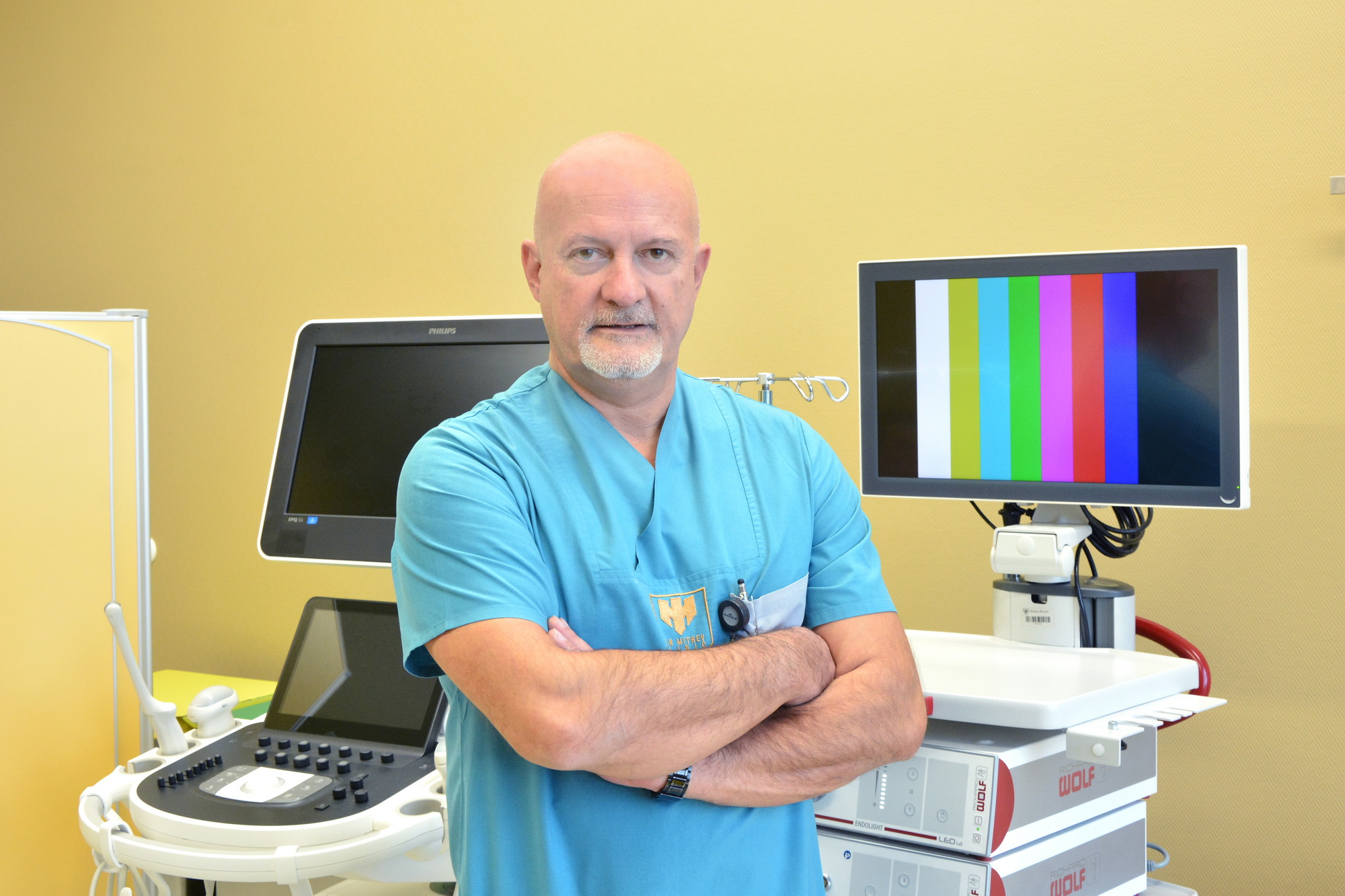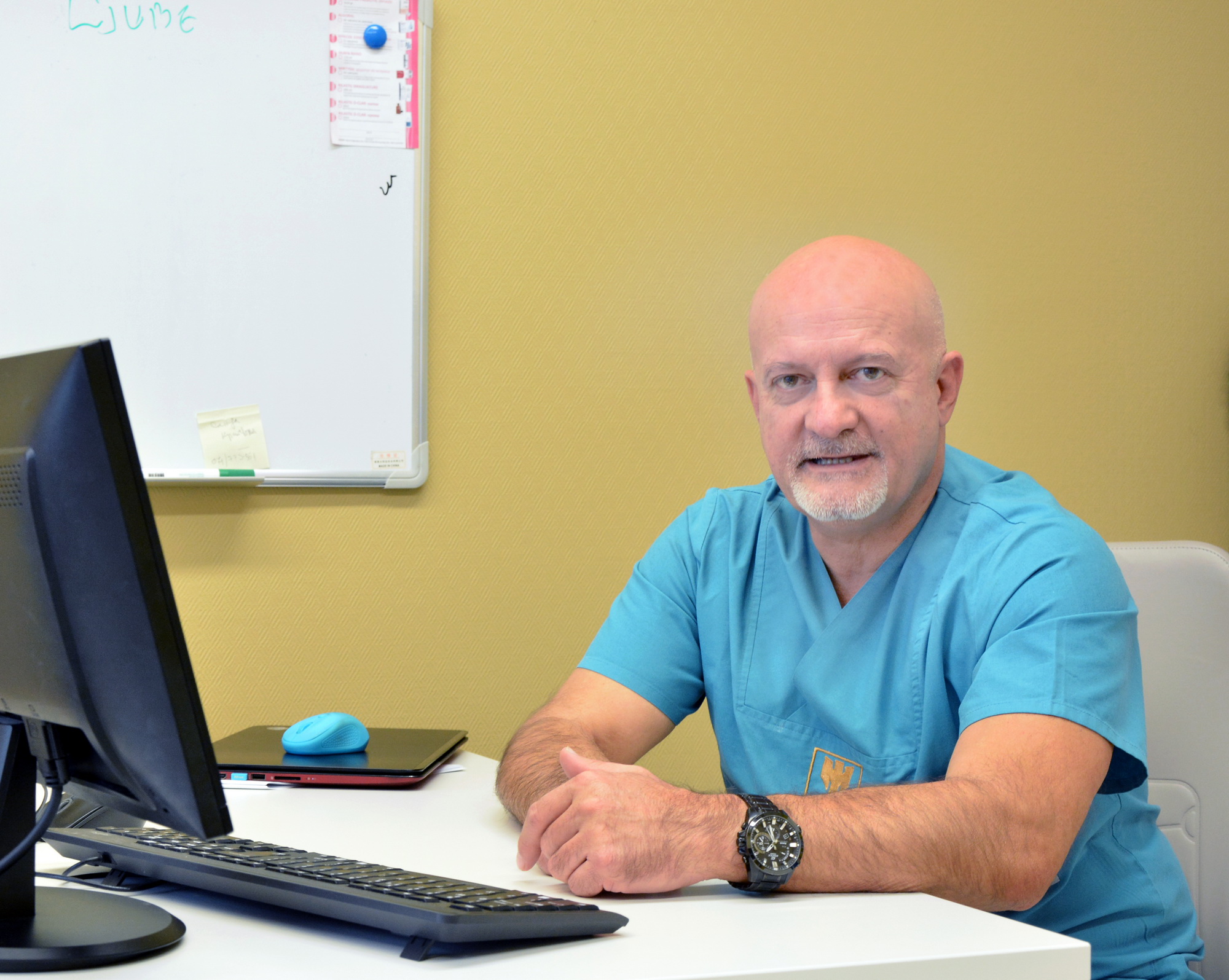 00389 2 3091 484
00389 2 3091 484
Dr. Goran Jovikj, urologist: How long will women be presenting men’s problems?
Daily dose of health
December 2, 2019
What is the term “male health”?
- 6-7 years ago, when the world male health campaign, the so called “Movember” campaign began in November, an attempt was made to awaken the consciousness of the male population and to emphasize the importance of regular examinations, especially among the middle-aged and older population, which in turn had a large impact on the whole male population. In fact, this campaign awakened the awareness of these people that they should regularly visit a urologist, take care of their health, and the male health in general.
Men are less likely to be examined than women. Why?
- Although men are biologically stronger, when it comes to their health, they are much more afraid than women. In fact, women are the initiators for their husband, father, brother to go and see a doctor. Most often when they come to the doctor’s office together with their husbands, it is the woman who talks about her husband’s symptoms, what type of pain he is feeling, and what the severity of the pain is, and although she has not felt it, she can accurately describe and present it. What is the type of pain, when does he complain, when did the symptoms occur? And men are always standing aside frightened, looking in their shoes. That’s the picture I see every day in the office.
At what age should regular urologist examinations begin?
- In the past, prostate problems would begin around the age of 50-55, but now this limit has changed, so my advice is that at least after the age of 45, every man should visit a urologist at least once a year, even without having any symptoms. Men have a different idea of what this preventive male examination looks like and maybe that’s why they are afraid of going to the doctor. It was a taboo subject, no one talked about it. What patients need to know is that the examination is first a conversation with the patient. First, we get the medical history, we simply talk in order to tell the patient some of the symptoms he may have but not feel. Then, a physical examination follows, including a rectal exam, which is totally painless. In fact, we touch the prostate with a finger through the rectum because the prostate is in close contact with the end part of the colon. Therefore, it is completely accessible and by the consistency of the gland, we can detect its heat, whether it is hard or soft, flat or not, is it enlarged … after which we can already get directions for further examinations. This examination is followed immediately by an ultrasound examination, where we see the whole urogenital system, the placement of the kidneys, we look for presence of eventual calculosis, tumor formation, any blockage of the kidney. Then, we see the bladder, its thickening, bladder tumor proliferates, their serration, thickening of the bladder wall, we see the prostate, and we measure its weight in grams to get a complete picture. We also see the testicles with ultrasound. Most importantly, with ultrasound we can also measure the residual urine. It is usually recommended to make this examination with a full bladder, so we could see the whole system. Then we tell the patient to empty the bladder, and we examine him again. If there is any kind of stoppage in urination, this means that the prostate started making initial problems. The patient did not completely urinate and there is a residual urine, i.e., two-stage urination – the patient initially urinated and after a few minutes he had another urge to urinate. These are the initial symptoms of prostate disorders. The primary symptom is the release of the urine jet, which is a very important symptom when patients slowly get used to it, live with it, and do not notice it
What is the PSA test and when should we be worried?
- Immediately after the initial physical and ultrasound examination, a PSA test is performed through blood analysis. The prostate-specific antigen test is a nonspecific tumor marker that may indicate presence of a malignant prostate disease, but the PSA test can also show high values in case of inflammatory process of the prostate gland. So, there may be enormously elevated PSA values, but that would not mean a certain cancer. There is also a more specific test that may indicate cancer, but is not 100% certain of a prostate cancer, that is the PHI index that is now being introduced in our country, and which compares the total and the free PSA of the body. The urologist decides which patients should make this test. Practically, the PHI-index does not indicate whether a patient should undergo a biopsy.
Is biopsy an obstacle for the patient to see a doctor?
- No, it’s not true, that’s why all these previous examinations are performed, and a proper medical indication is needed to determine which patients should be referred to biopsy. It is done by urologists and it’s ultrasound-guided to see which part of the tissue should be taken. We enter the rectum with a rectal probe, we see the prostate on a monitor, we have a biopsy needle guide, and take the smallest part of the prostate tissue that is sometimes up to 2 cm long and less than 1 mm thin. Tissue is sent to pathohistology and is diagnosed in 5-7 days. Then we can be sure whether there is a malignant disease.
What are the treatment steps when it comes to enlarged gland and when the bad cells are already found?
- November, as the month for men’s health campaign, is a reminder for men to grow mustache and remember to see a doctor. This whole campaign is positive for early detection of prostate cancer. Early detection means that the patient, even if diagnosed with prostate cancer, could save himself. I must emphasize that with early detection, the prostate cancer today is 100% treatable. Prostate cancer should be detected in its early stages. The whole procedure, from initial examination of the patient, if we suspect presence of a malignant prostate disease, to diagnosing with biopsy, can be completed in 8-10 days, after which we have time and guidelines what to do with the patient’s treatment. If there is a malignant prostate disease, it is treated surgically (radical prostatectomy), classically or laparoscopically. Radical prostatectomy means that the prostate is completely removed with its capsule, the seed vesicles (small glands in direct contact with the prostate), the lymph glands, the obturator nodes located to the left and right of the prostate. This is the complete removal of that system. Whether it is classically or laparoscopically performed, the goal is the same. With this type of treatment, we treat patients up to a certain stage of the onset of the disease. In further stages of the disease, patients are not treated with surgery. I must immediately point out that these patients receive hormone therapy. Monthly or quarterly they take the drug “Depon” that helps lowering the levels of testosterone in the body, as it is the culprit for the progression of the disease. By lowering the level of testosterone in the body we have a “chemical castration”, which means prostate gland atrophy. This way, the prostate cancer will be hormonally controlled, the patient could be kept this way for years and he could be in relatively good condition and have quality life. Today, we require a drug that we actually have, that is to maintain the level of testosterone in the body, to maintain the libido (the patient’s potential) and impact the prostate gland. This type of medicine is used in benign prostatic hyperplasia.
Do men take testosterone steroids because they want to have a nice body, and what could that cause?
- This is a big problem, not only in our country but everywhere in the world because in the fitness centres where young people go, there is no one to tell them how to use these preparations. The preparations they use should always be balanced and they must consult an endocrinologist. By introducing testosterone into the body, the pituitary gland, as a conductor of all glands, receives information that the body has testosterone saturation, orders the testes to stop releasing testosterone, and virtually excludes them from work. When testosterone is used for some time, testicular atrophy begins, and they are losing their function. This is followed by lowered libido, impotence, and this is where psychological problems begin. Therefore, I urge all young people who want to have a good body, first to get informed, consult a professional and then start using any preparations for good health.
How often is impotence present in males and how is it detected?
- Impotence is not always a disease; it can be a symptom of other diseases. Therefore, patients should not be screened for urination or prostate alone, they should also pay attention to libido and potency. This is still a taboo subject. Still, no one would say this to a doctor, although the privacy of these intimate exams is guaranteed, and everything remains with the doctor. Therefore, patients should be honest, because it is not shameful.
Besides all other activities, our clinic is specialized for cardiovascular disease. We often detect patients with cardiovascular problems due to disorders in their lower blood vessels responsible for good potency and lowered erectile function. We have disruption and clogging of these fine blood vessels, and this raises the suspicion that the patient may have the same condition in the coronary vessels. This can be more of a symptom for discovering an important condition in the patient and may sometimes require immediate response. Therefore, be brave and tell your problems.









